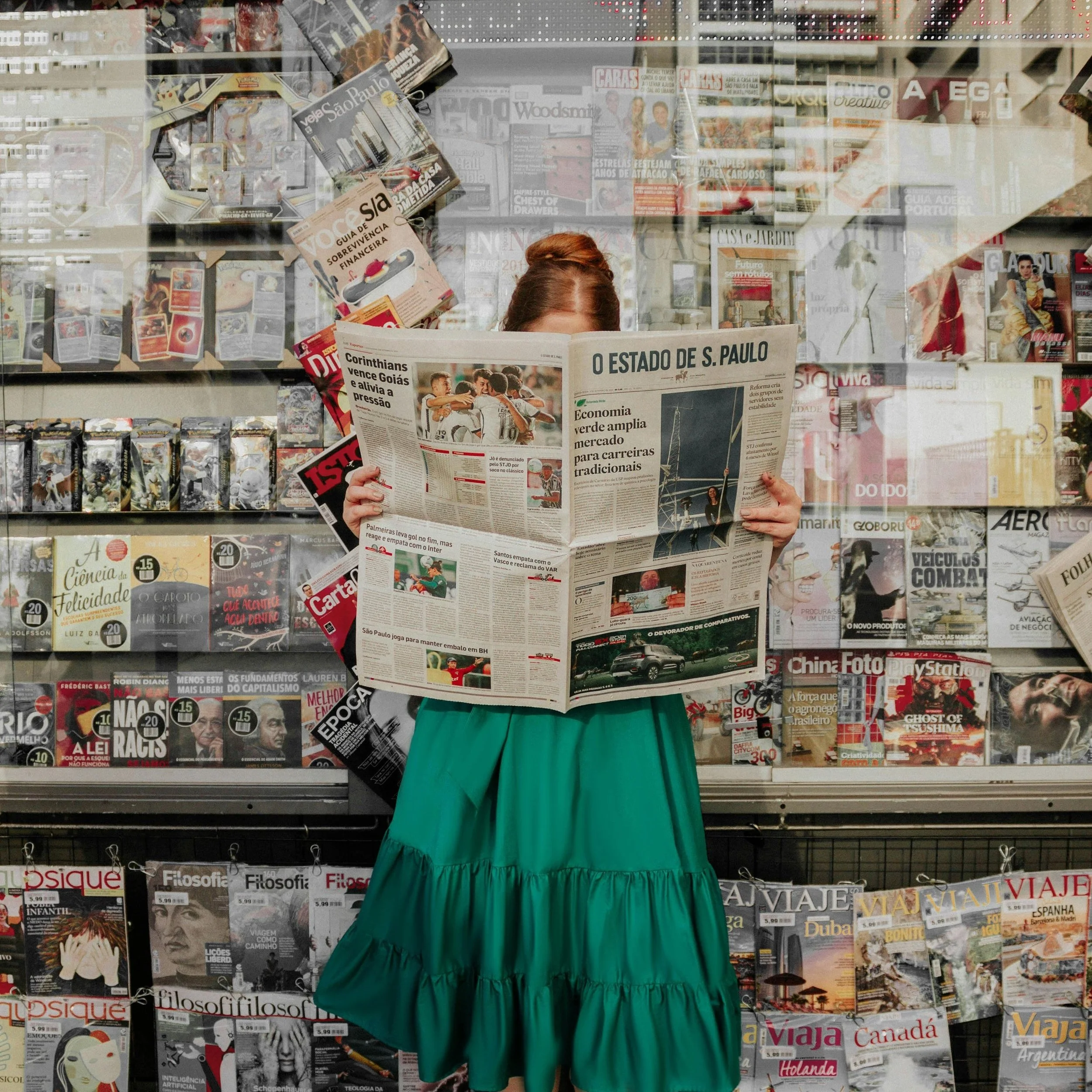How Artists Can Get Press Coverage; Your story is more important than your art
In the competitive art world, countless artists dream of media coverage, magazine features, and exhibition reviews. But here's the harsh truth: journalists don't care about your latest exhibition, they care about why that exhibition matters to their readers.
Your Exhibition Theme Is Your Story
"Local artist opens exhibition at downtown gallery" will never make headlines. But "Artist transforms personal grief into powerful commentary on mental health stigma" could land you a feature. Your exhibition's theme, concept, and connection to current cultural moments are what journalists are really seeking.
Instead of announcing what you're showing, focus on why you're showing it:
What personal experience or social issue inspired this body of work?
How does your art address current cultural conversations?
What unique perspective are you offering on a universal theme?
What transformation or journey does the exhibition represent?
Know Your Publications: Tailor Your Angle
Different publications serve different audiences, and your pitch must reflect this understanding.
-
Visual impact and aesthetic inspiration
Artists creating beautiful, liveable spaces
The intersection of art and design
Behind-the-scenes glimpses of artistic home studios
Collectors sharing how art transforms their living spaces
-
The business of art and market insights
Artists as entrepreneurs and innovators
Investment potential and art market trends
Technology's impact on the art world
Social impact and corporate art programs
-
Critical discourse and theoretical frameworks
Historical context and art movements
Technical innovation and materials
Gallery and museum politics
Artist career trajectories
Leverage Social Media Holidays and Cultural Moments
Smart artists align their exhibitions and pitches with relevant social media holidays and cultural events:
Seasonal and Cultural Hooks:
Art Fair seasons: Miami Art Week, Venice Biennale, Frieze
Holiday seasons: Eg. Christmas markets, Halloween installations
Back-to-school: Educational programming and university partnerships
Summer festivals: Local outdoor installations and public art
National and International Days:
World Mental Health Day (October 10): Perfect for exhibitions exploring psychological themes
Earth Day (April 22): Ideal for environmental or sustainability-focused work
International Women's Day (March 8): Great timing for feminist art or female artist spotlights
Black History Month (February for the US): Essential for African American artists and themes
Pride Month (June): Ideal for LGBTQ+ artists and themes
Your Artist Media Kit:
Professional Photography Is Non-Negotiable:
Artwork images: High-resolution, colour-accurate, multiple angles
Installation shots: Show the work in context, with proper lighting
Detail shots: Close-ups revealing texture, technique, brushwork
Process photos: Behind-the-scenes creation shots
Portrait photos: Professional and candid shots in your studio
Space shots: Your studio, gallery spaces, art in situ
Preparing for Press Coverage
Your Digital Presence: The First and Last Impression
Before a journalist responds to your pitch—and definitely before they publish anything about you—they will Google you. Your website and social media accounts are often the determining factors in whether your story gets picked up.
-
When a writer visits your site, they need to find exactly what they're looking for within seconds. This means:
Current exhibition information prominently displayed on your homepage
Recent artwork showcased with high-quality images
Updated artist bio that matches your current practice
Press-ready materials easily accessible (high-res images, statements, bio)
Contact information that works and gets responses
Social media links that are active and current
Remember, your website will likely be referenced in any article about you. It becomes the destination for readers who want to learn more. If they land on an outdated site with broken links and old exhibitions, you've wasted the press coverage.
-
Your Instagram, Facebook, and other platforms should tell a cohesive story:
Consistent posting shows you're an active, working artist
Behind-the-scenes content provides journalists with additional story angles
Professional yet personal tone balances relatability with credibility
Tagged locations and collaborators connect you to your community
Stories and reels offer glimpse into your creative process
Artists often underestimate how much journalists use social media to understand their subjects. Your posts from the past few months can provide context, quotes, and additional story angles that strengthen their article.
The Story Sells
Getting press coverage as an artist isn't about who you know—it's about crafting compelling narratives that resonate with specific audiences. Your art has a story; your job is to find the angle that makes journalists and readers care about that story.
Remember: galleries show art, but publications tell stories. Make sure your story is worth telling, time it right, and prepare thoroughly. Whether you're pitching Elle Decoration about your colour-healing practice or Forbes about your innovative use of tech materials like 3D printing or smart pigments, the key is matching your unique story to their audience's interests.
Your art deserves to be seen, but more importantly, your story deserves to be told.
See More Resources
See more resources from Gita Joshi and The Curator’s Salon below




